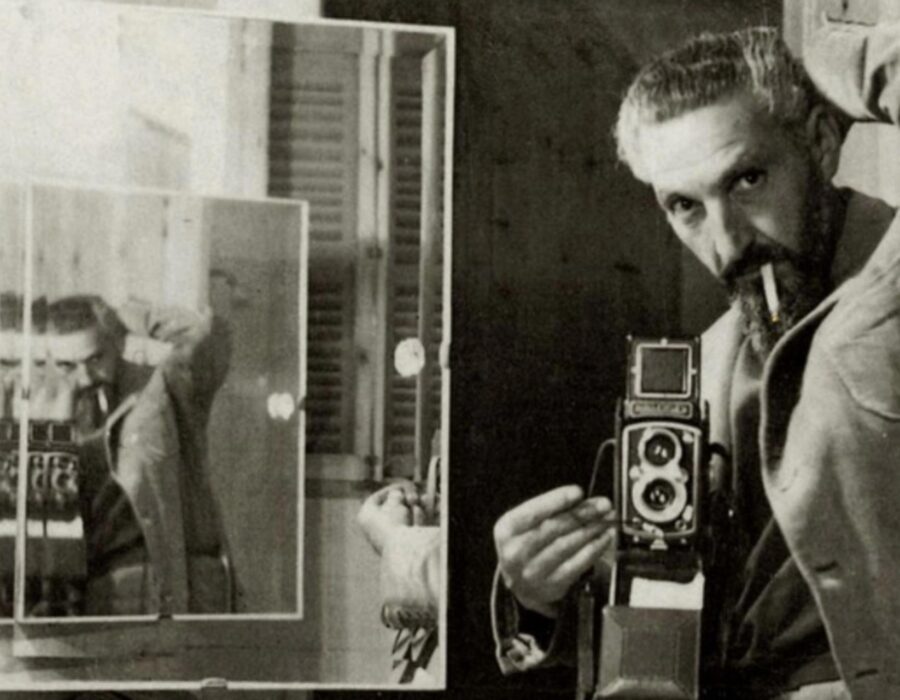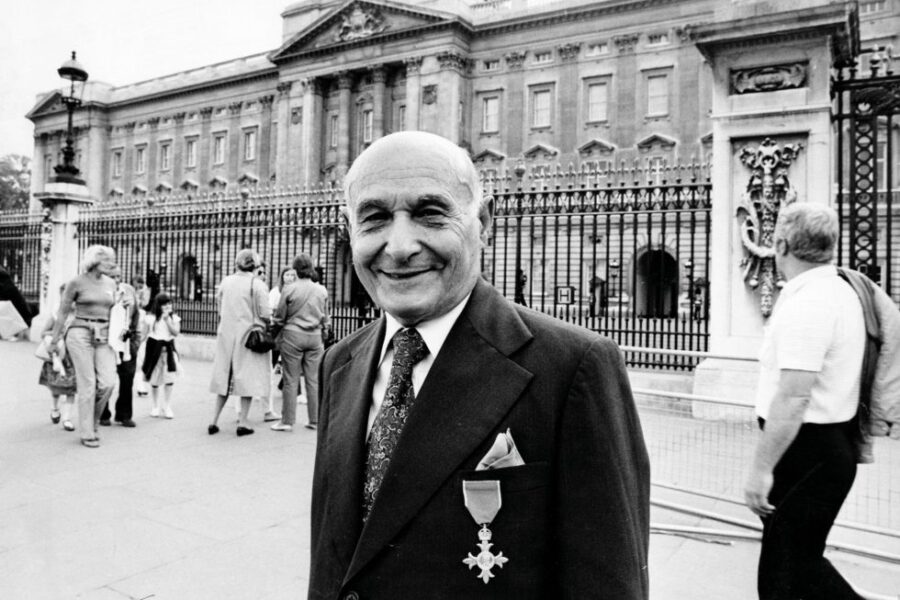
Spies in Mallorca
It is common for children to dream about what they would like to be when they grow up and, in general, they prefer professions that bring fame, money and a life full of adventure. Many say footballer, others say airline pilot or astronaut, and some even say secret agent.
Obviously not everyone achieves their dreams, and indeed, becoming a secret agent or spy seems more like something out of 007 movies than reality. But they still exist, and in fact, our island has been home to many of them, even if this is still a secret matter.
A particularly intense period in this activity was our civil war, the Second World War and the Cold War. There were agents on both sides in Mallorca, so today we will talk about this subject, about spies in Mallorca and, above all, about a British agent, Tommy Harris.
British secret services
Most famous for the popular James Bond film series, Agent 007, the British secret services are divided between MI5, and MI6. Today, the Security Service or MI5 is in charge of internal UK security and the Secret Intelligence Service or MI6 is in charge of external, global security.
These types of government agencies always seek to select people with a very good education and, even better, if they are also well connected. To give us an idea of how these services can infiltrate, Benito Mussolini himself, when he was editor of the Milan daily “Il Popolo d’Italia”, was an MI5 agent.
Agencies in other countries
It is often said that “information is power”, which is why, at different times, the most powerful countries have always allocated a lot of resources to their secret services. The best known are: the CIA (US), the KGB (USSR) and now replaced by the FSB (Russia), as well as the aforementioned MI5 / MI6 (UK). Another that became very famous was the STASI (of the now defunct DDR, the German Democratic Republic), but possibly the most dynamic and effective of all is MOSSAD (of Israel).

An artist turned spy
Tomás Harris Rodríguez was born in England in 1908 to an English father and a Spanish mother from Seville. Both his paternal and maternal families had been successfully involved in art and antiques, and Tommy also turned his attention to this field. He studied at the Slade School of Fine Art in London and at the British School at Rome in Italy. This exquisite training and his privileged family background enabled him to become a painter, sculptor, collector and art dealer, becoming a great specialist in Goya.
Apparently, his older sister Enriqueta was already well introduced to the art world and knew Anthony Blunt very well. He was a professor at Cambridge University, appointed curator of the Royal Collection and even a personal advisor to the Queen of England – in short, an institution in the art world and in high society.
With Tommy Harris being half English and half Spanish, cultured and refined, and with good personal connections, he would have the ideal profile to be in a secret service. And that’s what MI6 must have thought of when they recruited him to collaborate with them.
Tommy’s wife, Hilda, was a great hostess and organised dinners and events and events at her elegant home in the prestigious Mayfair neighbourhood. She hosted exquisite meals and the finest wines, gatherings attended by the most sybaritic of British society, including many alumni of the prestigious Cambridge University. Artists, nobles, art dealers, antiquarians, historians, military and government officials were regulars at these gathrings. Among them were Kin Philby, Desmond Bristow, Donald MacLean, Lord Victor (III Baron de Rothschild), Guy M Liddell, Ewen Montagu, Guy Burgess and the aforementioned Anthony Blunt himself.
These were the environments in which the Harris family moved, and ideal breeding ground for hobnobbing with influential friends and gathering substantial information.
Motivation, ideals or ambition?
Many of the above-mentioned characters were involved in espionage activities. Some out of the obligation of their government office, others out of personal ambition, political conviction or perhaps simply to spice up their lives with a little adventure. Blunt, Philby, Burgess and MacLean, despite being born into well-off families, were convinced communists. Tommy Harris, however, seems to have has a simply anti-fascist profile.

A Catalan with a lot of garbo
“Garbo”, by this peculiar name Joan Pujol García was known. A clever Catalan who took part in the Civil War as an ensign on the Republican side. He later had the ability to infiltrate the secret services of Nazi Germany. As if this were not enough, he later offered himself to the British services, acting as a double agent, in effect deceiving the Germans and favouring the Allies.
And… why do we mention Garbo, when the article focuses on Tomás Harris? Precisely because the direct contact with the British secret services was Tomás Harris. If Pujol was the visible face, Harris was the brains behind the character who has gone down in history as Garbo. Between them they created a fictious network, in reality non-existent, of almost 20 sub-agents who were scattered throughout England and who provided information to the Germans through Pujol, whom they knew by another name, ‘Arabel’.
His greatest success was the most spectacular deception operation of World War II. It convinced Hitler and the Nazi high command that the great Allied landing of 1944 was to take place through Calais, and not Normandy as it finally was. This deception allowed the operation to succeed and saved thousands of lives, on both sides.
The incredible thing about this character is that, for his merits, he was decorated with both the ‘Order of the British Empire’ and the Ìron Cross’ of the Nazi regime. The life of this man was truly eventful, and there is not enough space here to recount all his vicissitudes. If you are interested in these subjects, we highly recommended reading a book or watching a documentary about Joan Pujol, alias Garbo.
Allan Hillgarth
Espionage networks spread like the branches of a tree and many of their elements are interconnected even if they themselves do not know it. We do not know how Harris and Hillgarth, a navy captain and British consul in Mallorca in the 1930s and 1940s, could have been related. But what we do know is that he also worked for the British secret services, from his office in El Terreno. He bought and settled in a beautiful finca in Santa María del Camí, Son Torrella. Hillgarth had good relations with Joan March, the Mallorcan smuggler and later banker.
He had a whole network of agents, in all the Spanish ports, others infiltrated within the police and the Ministry of the Interior, and also in the aristocratic circles of our country. He was, so to speak, the ‘eyes of Churchill’ in the western Mediterranean.
Hillgarth was involved in another well-known operation to deceive the Nazis, Operation Mincemeat, by making them believe that a major Allied landing would take place in the Greek islands, when in fact it eventually took place in Sicily.
The Cambridge group, who they were?
The famous University of Cambridge, where bright students and generally from wealthy and well-connected families are educated, has been an ideal place to recruit secret agents. This was the case of the “Cambridge Five”: Anthony Blunt, John Cairncross, Kim Philby, Guy Burgess and Donald Mac Lean, who for years worked for the British secret services. The big scandal broke out when it became known that they were also spying for the Soviets, acting as double agents. When suspicions were already cornering them, several of them defected and escaped to Russia: Burgess and Maclean in 1951, Philby in 1963. The following year, 1964, Blunt was discovered, although he was able to avoid prison for collaborating and possibly for his excellent relations with the Queen of England. Cairncross never admitted to being part of this group and these activities.
Several of them being close friends of Harris, it has always been speculated that Tommy was also working for the Soviets. Although this point has never been confirmed.
The Harris family moves to Mallorca
After the Second World War, Tommy Harris moved to Mallorca in 1947 with his wife Hilda. In 1949 he bought a beautiful house in Camp de Mar, and in principle, his intention was to devote himself to his great passion: art. He created his own work, produced the book ‘Goya, engravings and lithographs’ and worked as an art dealer. His social life here on the island must not have been as interesting as in London, although among his friends was the well-known writer Robert Graves. It is known that his wife did not like the local atmosphere, and the couple had fierce arguments, aggravated by Thomas’s addiction to alcohol and anxiolytics.
We do not know to what extent he was still linked to the activities of the secret service. But it is almost certain that from here he helped spread the news that Joan Pujol ‘Garbo’ had died of malaria in 1949 in Angola. A diversionary manoeuvre to avoid reprisals from the Nazis who, although they had lost the war, were still very active.
Harris lived on the island for many years, from 1947 until 1964, when he died in rather strange circumstances.
The final outcome
On 24 January 1964, The Harrises took their car from Camp de Mar to Felanitx, stopping in Palma in between, apparently to have lunch with Robert Graves. As was usual for Tommy, the meal was washed down with a lot of alcohol and, later on, there was no shortage of arguments with his wife. Even so, after lunch they resumed their route along the Palma-Llucmajor road. At km 23.500 the car left the road and crashed into a tree, killing Tommy and leaving his wife unharmed.
The exact cause of the accident is not known: excessive speed? inaccurate driving due to excessive drinking? a distraction due to arguing? a technical fault in the car?
The failure of the car would be quite unlikely, as it was very new (from 1963). Furthermore, the model, a Citroën DS 19 ‘Tiburon’, was known to have vey good and advanced suspension brakes for its time. Unless is had been intentionally manipulated to cause a disaster…
Theories have circulated that it may have been the KGB who caused this accident. Not long before his close friend Kin Philby had escaped to Moscow and months later, Anthony Blunt was also discovered to be a Soviet agent. It is possible that Harris knew many things that should not have been known. And for that reason the KGB would have decided to eliminate him, although this has never been proven.
Harris’s darker side
The life of a spy can never be very transparent, and so there are facets of it that we do not know. He was very successful in his business as an art dealer. And it is said that during the Spanish Civil War he took advantage of the situation to buy works of art at ridiculous prices from people in difficulty. He is also said to have sold paintings by classical Spanish painters (Velázquez and Goya), which were not always authentic, to Venezuela, as well as being the financier of paymaster of the Cambridge group. Little will we ever know whether these activities were true or whether he really collaborated with the Soviets. But what we do know is that he ended his days in Mallorca and that his remains rest in the Son Valentí cemetery in Palma.
This post is just a very brief summary of the life of a spy plot, somehow related to Mallorca. Many of his adventures inspired the writer Graham Greene, who has several books published on the subject. We invite those interested in the subject to read and watch documentaries about each of these characters. Their stories are truly fascinating and it is impossible for us to expand on them here.
